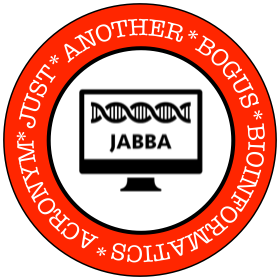101 questions with a bioinformatician #37: Keith Robison
This post is part of a series that interviews some notable bioinformaticians to get their views on various aspects of bioinformatics research. Hopefully these answers will prove useful to others in the field, especially to those who are just starting their bioinformatics careers.
Keith Robison is a Senior Bioinformatics Scientist at a small biotechnology company based in Cambridge, Massachusetts. His employer has an interest in the natural products drug discovery space and as Keith puts it, his own work concerns 'Assembling and analyzing actinomycete genomes to reveal their biosynthetic moxie'.
If you didn't already know — and shame on you if that is the case — Keith writes about developments in sequencing technologies (and other topics) on his Omics! Omics! blog. This is required reading for anyone interested in trying to understand the significance of the regular announcements made by various companies that develop sequencing technologies. In particular, his analysis of news coming out from the annual AGBT conference is typically detailed and insightful.
You can find out more about Keith by reading his aforementioned blog or by following him on twitter (@OmicsOmicsBlog). A special thanks to Keith for waiting patiently on me to get this interview posted! And now, on to the 101 questions...
001. What's something that you enjoy about current bioinformatics research?
All sorts of re-thinking how to do things — productive ways to look at old problems. Look at all the exciting improvements in assembly coming from long reads, or alignment-free RNA-Seq and metagenomics. Cool stuff.
010. What's something that you don't enjoy about current bioinformatics research?
Too many papers that report a new program without adequate benchmarking or a clear description of what differentiates the program — is it really different, or just old wine in new bottles?
011. If you could go back in time and visit yourself as a 18 year old, what single piece of advice would you give yourself to help your future bioinformatics career?
Wow. I didn't dabble into bioinformatics until I was 19. I think my advice would be try out a new programming language every other year — I've gotten a lot of mileage out of a few languages, but even learning a new one (that I subsequently drop) productively influences my programming.
100. What's your all-time favorite piece of bioinformatics software, and why?
My favorite bioinformatics software was the original WWW interface to FlyBase — first: because I wrote it as a lark, second: FlyBase paid me to support it after I showed it off, and third: because its one of the few programs of mine that ever had an explicit sunset!
101. IUPAC describes a set of 18 single-character nucleotide codes that can represent a DNA base: which one best reflects your personality, and why?
M — Methionine is good at getting things started (KRB: yes I know, Methionine is not an IUPAC nucleotide character…but that was the given answer to the question).





